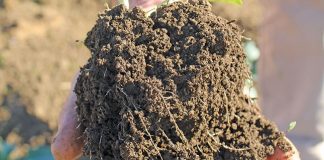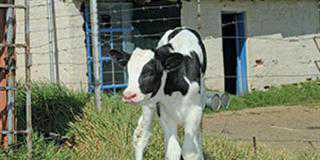Codling moth is one of the major pests responsible for economic losses in the pome fruit industry, which includes apples and pears. Farmers are under pressure to move from conventional control measures to more environmentally friendly methods, and need to achieve lower or zero-residue fruit to preserve their export status.
Now apple and pear producers in Western Cape can fight the codling moth problem by introducing sterile insects into their lands. This is an economical alternative to pesticides, explained Martin Wohlfarter, manager of Entomon Technologies (Pty) Ltd, at the opening of the company’s new sterile codling moth production facility at the Welgevallen Experimental Farm at Stellenbosch University.
Bio-control
The launch of this new facility comes a year after the opening of another facility, SIT Africa (Pty) Ltd, which was created to plan, co-ordinate and execute area-wide fruit fly bio-control programmes. Both SIT and Entomon are owned by the South African Apple & Pear Producers Association.
These facilities are driving the Sterile Insect Technique (SIT) and Sterile Insect Release (SIR) programmes, to mitigate quarantine and market access risk for South African fruit exporters. SIT is an environmentally friendly bio-control method to control, and, over time, even eradicate problem-causing insects such as fruit fly and codling moth in fruit growing areas.
Because bio-control reduces the need for chemical insecticides, fruit exporters can meet strict international sanitary and phytosanitary standards, retaining existing export markets and qualifying for entry into new ones.
According to SIT Africa chairperson Anton Rabe, the SIT and SIR programmes involve the mass rearing of codling moth and Mediterranean fruit flies and the release of sterilised male insects into orchards and infested areas. The sterile males mate with wild females, which will then lay unfertilised eggs.
SIT Africa only releases male fruit flies, as sterile females would still lay eggs by piercing the skin of the fruit. Entomon releases both sterilised male and female codling moths, which lay eggs on the surface of the fruit without damaging it. Thus fertile wild males can also be decoyed.
Controlling coddling moth
Research into the success and financial viability of SIT and SIR codling moth programmes in South Africa started in 2003 in Elgin under the management of Matthew Addison and Dr Daleen Stenekamp. At the time, the original trial facility produced about 1 500 moths per week, enough to supply 1ha of apple or pear orchards.
One year later, the project expanded to a larger facility, based at the Agricultural Research Council (ARC) Infruitec campus in Stellenbosch. This facility peaked at a production of 300 000 moths per week in 2010, servicing 120ha. The new 560m² facility at Stellenbosch University’s experimental farm was commissioned in October 2010, but only reached full production in August 2011.
The research was initially conducted by PhD students from the university, but now it only provides the premises Entomon rents. The new facility can produce over 2 million moths a week and currently supplies just over 3% of the local pome fruit industry.
“At Entomon, codling moths are reared from egg to adult within 28 to 30 days on a wheat-based diet,” says Wohlfarter. “Individually sealed rearing cabinets house about 100 000 growing moths, to help prevent contamination by fungi and other insects.”
Temperature and humidity conditioned air, filtered by a high-efficiency particulate air (HEPA) process, is supplied to each cabinet, ensuring sufficient ventilation throughout production.
“Shortly before the moths emerge, the cabinets are moved to an emergence room, where the moths are attracted to a UV light and transported by vacuum into a cold room. The size of the area to be treated the following day determines the number of moths sterilised, while a specific number are retained for the facility’s production cycle.”
Once collected, moths are irradiated for sterilisation off-site, at the ARC-Infruitec facility. Sterilised moths are packed in cooled wheat bran, to ensure they aren’t harmed during transportation to the farm.
The sterilised moths are released at a rate of roughly 1 000 moths/ha, twice a week to ensure a population of over 40 sterile moths to each wild moth. This costs R3 000/ha per season, of which the South African Apple & Pear Producers Association is subsidising R1 000 for the first season.
Market potential
Wohlfarter says that, in time, sterile codling moths will decrease wild moth numbers so much that producers will be far less reliant on chemical pesticides. This will increase market potential as fruit is produced in a more environmentally friendly fashion.
During the first seasons a thorough, integrated approach will be needed to effectively manage pest populations. “In time, growers can expect substantial cost saving on pest management,” he adds. In the next two years, Entomon intends to expand its service from the Elgin/Grabouw and Ceres areas to the Vyeboom, Villiersdorp areas, as well as the Langkloof area and other apple and pear production areas.
Contact Martin Wohlfarter on 072 288 2060 or email [email protected].
Caption:
At Entomon, codling moths are reared from egg to adult within 28 to 30 days on a wheat-based diet. Individually sealed rearing cabinets house about 100 000 growing moths.
COURTESY OF HORTGRO-SERVICES













